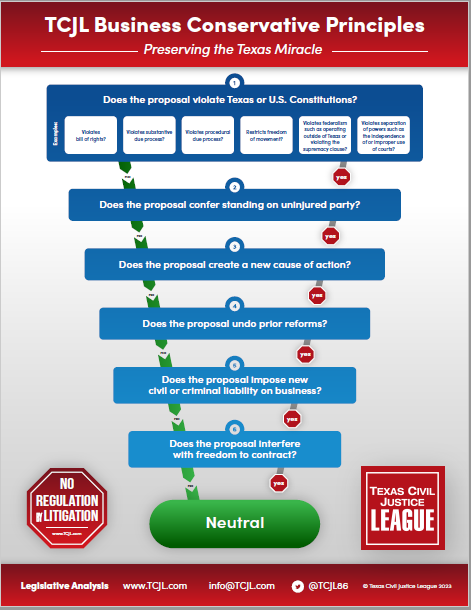 For the second time in four years, the Texas Supreme Court has weighed in to reverse a court of appeals’ decision nullifying an additional insured’s coverage under a CGL umbrella policy.
For the second time in four years, the Texas Supreme Court has weighed in to reverse a court of appeals’ decision nullifying an additional insured’s coverage under a CGL umbrella policy.
As we reported nearly in the fall of 2021, the First Court of Appeals [Houston] handed down a decision in a coverage dispute between an additional insured and CGL carriers that flatly contravened recent SCOTX precedent. In the related appeals National Union Fire Insurance Company of Pittsburgh, PA. v. Exxon Mobil Corporation and Starr Indemnity & Liability Insurance Company and Exxon Mobil Corporation v. Starr Indemnity & Liability Insurance Company (No. 01-19-00852-CV; Opinion issued September 21, 2021), the court of appeals reversed a summary judgment in favor of the additional insured, Exxon, for reimbursement of damages and attorney’s fees under its contractor’s CGL coverage. In December 2021 TCJL filed an amicus curiae brief in support of ExxonMobil’s petition for review to the Texas Supreme Court. The Court subsequently granted review.
On Friday SCOTX issued its decision in ExxonMobil Corporation v. National Union Fire Insurance Company of Pittsburgh, PA and Starr Indemnity & Liability Insurance Company (No. 21-0936). The underlying litigation commenced in 2013. Exxon contracted with Savage Refinery Services, LLC for construction services at its Baytown Refinery. As is standard practice, Exxon required Savage to carry “its normal and customary” CGL for injury, death, or property damage and to cover Exxon as an additional insured. While performing services at the plant, two Savage employees were injured by a release of hot water and steam. One of the employees filed a lawsuit against Exxon, while the other sought payment of damages outside of litigation. Exxon ultimately settled with both for about $22 million. It then sought reimbursement of the settlement amount and attorney’s fees from Savage’s CGL and umbrella policy carriers, AIG Europe Limited, National Union, and Starr. AIG paid its limit, but National Union and Starr denied coverage. Exxon filed breach of contract claims against both companies, as well as a declaratory judgment claim. The trial court granted summary judgment for Exxon against National Union. It also granted summary judgment for Starr against Exxon on the basis that the Starr policy covered marine risks and was not a CGL policy. Everybody appealed.
This is the second time the same issue had come through the Houston courts of appeals in a matter arising from the same accident. In this second round, the First Court looked almost exclusively to the Service Agreement to bootstrap Exxon out from under the plain language of the CGL policy, which covered additional insureds like Exxon. The court of appeals also concocted an interpretation of “commercial general liability” coverage that allowed it to sidestep SCOTX’s clear holding in State of Pennsylvania, Deepwater Horizon, and other cases that an insurance policy must explicitly incorporate extrinsic documents in order to make them part of the insurance contract. If the policy does not do that, then a court may only look to the extrinsic document to determine the contractor’s insurance obligations to the additional insured. Exxon’s contract with Savage dictated that Savage cover Exxon for the very occurrences that happened in this case. That should have been the end of the story, but SCOTX had to tell the First Court that they really meant it the first time.
As referred to above, in 2019 SCOTX handed down an opinion in Exxon Mobil Corporation v. The Insurance Company of the State of Pennsylvania (No. 17-0200), in which TCJL likewise participated as amicus curiae. That case involved the carrier’s attempt to recover from Exxon the workers’ compensation benefits paid to Savage’s employees under a subrogation provision in its policy with Savage. Exxon argued that the carrier had waived its subrogation right in the policy. The carrier argued that Exxon’s service contract with Savage limited Savage’s obligation to indemnify Exxon for Exxon’s tort liability and that Savage could not therefore waive subrogation for liability it did not assume under that contract. SCOTX agreed with Exxon that the language of the policy controlled and that extrinsic documents, such as service contracts, should only be consulted if explicitly incorporated by reference into the policy. The Court only referred to the service contract to determine whether Savage was required to provide Exxon with a waiver of subrogation, which Savage was. Absent an explicit provision in the carrier’s endorsement, therefore, the carrier was not entitled to subrogation from Exxon. As Justice Guzman wrote, “Mere reference to a constitutional obligation to provide the waiver does not import extrinsic limits on the waiver’s application.”
Speaking for a unanimous court in ExxonMobil II, Justice Young stated the rule this way:
Together, these and earlier cases reflect three basic principles for interpreting the meaning of an insurance policy: we begin with the text of the policy at issue; we refer to extrinsic documents only if that policy clearly requires doing so; and we refer to such extrinsic documents only to the extent of the incorporation and no further. Any venture beyond the four corners of an insurance policy must be carefully limited to the scope of that policy’s clearly authorized reference.
Applying this rule, the Court determined that it need refer to the service agreement for only two questions: who was insured and for what coverage. Since Exxon was added as an additional insured under the contractor’s primary policy, and the umbrella policies covered anybody to whom the contractor was obligated to provide insurance, the answer to the first question was Exxon. As to the second question, for what coverage, the insurers argued that since the umbrella policies excluded “broader coverage,” they did not obligate the insurers to pay more than the minimum limits of the contractor’s primary coverage under the service agreement. In other words, the insurers took the position that although Exxon paid for the umbrella policies through the contract rates, it wasn’t actually entitled to any coverage because once the primary policy was exhausted (as it always is before umbrella coverage kicks in), the insurers were off the hook. Obviously, the Court didn’t buy this argument. The umbrella policies didn’t say anything about the service agreement’s payout limits (which were minimum limits, by the way, not maximums), and if the parties really intended for the umbrella policies not to pay anything to anybody once the primary policy was spent up, they really ought to have said so. In short, “coverage” and “limits” are completely distinct concepts, and the policy (which here distinguished the two, despite the insurers’ argument) better be clear if it uses one term to mean the other.
We hope this case is finally over, although it has been a wonderful generator of legal expenses for the last decade. We applaud Exxon for sticking it out because the principle involved really is that important.











